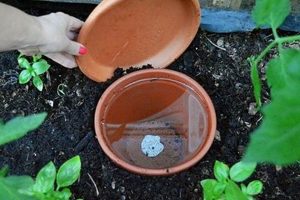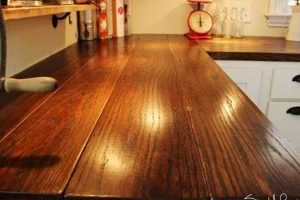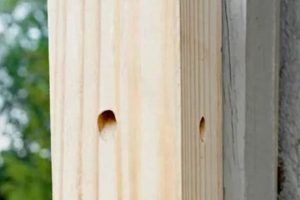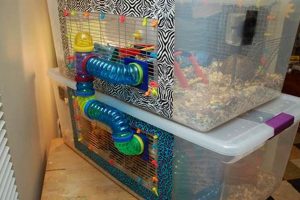The process of fitting floor covering materials within a domestic or commercial space, undertaken by the property owner rather than a professional fitter, involves multiple stages. These typically include accurate measurement of the area, preparation of the subfloor, cutting and fitting underlay, securing the carpet, and finishing edges. This approach differs significantly from contracting the task to specialized tradespeople.
Opting for self-directed completion of such projects can yield cost savings through the elimination of labor expenses. This approach offers autonomy in scheduling and material selection. Historically, the increase in readily available resources, such as instructional videos and specialized tools for hire, has contributed to the popularity of the practice.
Subsequent sections will examine the specific tools required, methods for precise measurement and cutting, techniques for proper stretching and securing, and essential safety considerations.
Expert Guidance for Flooring Self-Installation
Successful self-installation of floor coverings requires meticulous planning and execution. The following guidance is designed to enhance project outcomes and minimize potential errors.
Tip 1: Accurate Measurement is Paramount: Precise dimensions are critical for minimizing waste and ensuring a proper fit. Measure the room at its widest points, accounting for any irregularities or offsets. Add at least six inches to these measurements to allow for trimming and adjustments.
Tip 2: Subfloor Preparation is Essential: A clean, level, and dry subfloor is crucial. Remove debris, repair any cracks or unevenness with appropriate patching compounds, and ensure the surface is free from moisture. Ignoring this step can lead to premature wear and installation failures.
Tip 3: Utilize High-Quality Underlayment: Underlayment provides cushioning, improves insulation, and extends the lifespan of the floor covering. Select an underlayment with appropriate density and thickness for the intended application, considering foot traffic and subfloor material.
Tip 4: Employ the Correct Tools: A knee kicker, carpet stretcher, sharp utility knife, and seam roller are indispensable. Using inadequate or dull tools can compromise the quality of the installation and increase the risk of injury. Prioritize tool maintenance and sharpness.
Tip 5: Seam Placement Requires Careful Consideration: Position seams in low-traffic areas and away from direct sunlight to minimize visibility and wear. Ensure seams are properly aligned and securely bonded using seam tape and a seaming iron.
Tip 6: Stretching is Critical for Longevity: Proper stretching eliminates wrinkles and prevents premature wear. Use a carpet stretcher to apply uniform tension across the material, securing it to the tack strips around the perimeter of the room.
Tip 7: Secure the Edges Professionally: After trimming excess material, tuck the edges neatly between the flooring and the baseboards using a stair tool. This provides a clean, finished appearance and prevents fraying or unraveling.
Adhering to these guidelines ensures a durable, aesthetically pleasing result and maximizes the lifespan of the newly installed floor covering.
The subsequent section provides detailed guidance on common pitfalls and effective strategies for overcoming them.
1. Measurement Accuracy
Precise measurement forms the foundational element of successful floor covering self-installation. Inaccurate dimensions negate subsequent efforts, resulting in material waste, aesthetic deficiencies, and compromised structural integrity.
- Room Dimension Discrepancies
Rooms rarely conform to perfect squares or rectangles. Irregularities, such as alcoves, protruding pipes, or angled walls, necessitate meticulous measurement at multiple points. Failing to account for these variations leads to undersized cuts, requiring patching, or oversized cuts, resulting in excessive waste. Accurate sketching of the room’s perimeter, noting all dimensional variations, is crucial.
- Accounting for Material Overlap
Beyond the precise floor area, additional material must be factored in for seaming and trimming. Seams require overlap to ensure a secure bond. Trimming allows for adjustments along walls and obstacles. A conservative addition of six inches to the longest dimension is advisable to accommodate these requirements. Insufficient allowance necessitates piecing together remnants, creating visually unappealing and structurally weak seams.
- Pattern Matching Considerations
Patterned floor coverings demand even greater precision in measurement. The pattern repeat must align across seams to achieve a cohesive visual effect. Failure to account for pattern alignment results in mismatched patterns, detracting from the overall aesthetic. Calculating the number of pattern repeats required for the room’s dimensions is essential prior to cutting.
- Subfloor Levelness and Material Thickness
Variations in subfloor levelness impact the required material length, particularly when transitions to adjacent flooring surfaces are involved. Unevenness necessitates shimming or leveling to achieve a flush transition. Furthermore, the thickness of the selected floor covering affects the final height. Neglecting these factors results in tripping hazards or aesthetically displeasing transitions.
The interplay between precise measurement and these associated factors underscores its critical role in self-installation projects. Accurate dimensions, allowance for overlap, attention to pattern matching, and consideration of subfloor levelness collectively contribute to a professional-grade outcome. Investing time and resources in meticulous measurement techniques yields long-term benefits in terms of material utilization, aesthetic appeal, and structural integrity.
2. Subfloor Preparation
Subfloor preparation constitutes a foundational stage in any do-it-yourself floor covering installation, directly influencing the longevity, appearance, and performance of the finished floor. A properly prepared subfloor provides a stable and even base, mitigating potential problems arising from irregularities or pre-existing damage.
- Moisture Mitigation
Excessive moisture within the subfloor promotes mold growth, weakens adhesives, and causes dimensional instability in floor coverings. Prior to installation, moisture levels must be assessed using a moisture meter, and appropriate remedial actions taken. This might involve applying a moisture barrier, improving ventilation, or addressing underlying plumbing leaks. Failure to control moisture compromises the integrity of the entire installation, leading to costly repairs.
- Leveling and Smoothing
Uneven o
r rough subfloors create stress points in floor coverings, accelerating wear and tear. Protruding nails, loose staples, or uneven joints necessitate correction through grinding, patching, or self-leveling compounds. A smooth and level surface ensures uniform weight distribution and prevents premature degradation of the installed material. Neglecting this step results in an unprofessional appearance and reduced lifespan of the floor covering. - Debris Removal and Cleaning
Dirt, dust, and debris hinder adhesion and create imperfections beneath the floor covering. Thorough cleaning using a vacuum cleaner and appropriate cleaning solutions is essential. Furthermore, existing adhesives or coatings must be removed to ensure proper bonding. Residual contaminants compromise the bond between the subfloor and the new material, potentially leading to lifting or bubbling.
- Subfloor Material Compatibility
The type of subfloor material (e.g., concrete, plywood, OSB) dictates the appropriate preparation methods and adhesive selection. Concrete requires patching of cracks and application of a primer, while wood subfloors necessitate securing loose boards and addressing any structural deficiencies. Utilizing incompatible materials or methods compromises the integrity of the bond and can lead to installation failure.
Effective subfloor preparation, encompassing moisture mitigation, leveling, debris removal, and material compatibility, is paramount for achieving a professional and durable do-it-yourself floor covering installation. Investing time and resources in this foundational stage minimizes the risk of future problems and maximizes the long-term value of the project.
3. Material Selection
Material selection constitutes a critical determinant in the success of any floor covering self-installation project. The chosen material directly impacts durability, aesthetics, ease of installation, and overall cost-effectiveness. Consequently, a comprehensive understanding of various floor covering options and their suitability for specific applications is essential for achieving optimal results.
- Fiber Type and Performance
Different fiber types (e.g., nylon, polyester, wool, olefin) exhibit distinct performance characteristics regarding stain resistance, durability, and texture retention. Nylon, for example, offers excellent durability and stain resistance, making it suitable for high-traffic areas. Wool provides superior comfort and aesthetics but requires more maintenance. Selecting the appropriate fiber type based on anticipated use is paramount for long-term satisfaction. Mismatched fiber type leads to premature wear or excessive maintenance demands.
- Pile Height and Density
Pile height and density significantly influence the carpet’s perceived comfort and resilience. Higher pile heights create a plusher feel but are more prone to crushing under heavy furniture. Higher density provides greater resistance to wear and improved durability. The optimal combination of pile height and density depends on the intended use and aesthetic preferences. Insufficient density results in visible wear patterns, while excessive pile height increases cleaning challenges.
- Backing Material and Stability
The backing material provides structural support and dimensional stability to the floor covering. Common backing materials include woven polypropylene, jute, and synthetic latex. A robust backing material prevents stretching, wrinkling, and delamination. Selecting a backing material appropriate for the subfloor and intended use is crucial for ensuring a secure and long-lasting installation. Inadequate backing leads to instability and premature failure of the installation.
- Underlayment Compatibility and Functionality
The underlayment provides cushioning, insulation, and moisture resistance. Selecting an underlayment compatible with the chosen floor covering and subfloor is essential. Factors to consider include density, thickness, and moisture permeability. Proper underlayment selection enhances comfort, extends the lifespan of the floor covering, and reduces noise transmission. Incompatible underlayment can compromise the performance of the floor covering and void warranties.
The interplay between fiber type, pile characteristics, backing material, and underlayment compatibility underscores the importance of informed material selection in do-it-yourself floor covering projects. A thorough evaluation of these factors ensures a durable, aesthetically pleasing, and cost-effective installation. Neglecting these considerations increases the risk of premature failure, aesthetic deficiencies, and compromised long-term performance.
4. Tool Proficiency
Effective execution of floor covering self-installation hinges significantly on the operator’s command of specialized tools. Proficiency in their use directly influences the quality of the finished product, the efficiency of the installation process, and the minimization of potential errors or injuries. Therefore, acquiring a working knowledge of relevant tools and their proper application is crucial for achieving satisfactory results in self-directed flooring projects.
- Knee Kicker Application
The knee kicker serves to engage the floor covering and initiate the stretching process. Consistent and controlled application of force is essential to avoid over-stretching or damaging the material. Improper use results in uneven tension, leading to wrinkles and a substandard appearance. Experienced installers develop a nuanced feel for the appropriate pressure and angle required for different materials and installation contexts.
- Carpet Stretcher Mastery
The carpet stretcher applies significant force across the expanse of the floor covering, securing it to the perimeter tack strips. A thorough understanding of the stretcher’s mechanics and appropriate techniques for applying tension is vital. Uneven stretching leads to distortions and buckling. Professional installers utilize their knowledge to distribute tension evenly, creating a taut and wrinkle-free surface.
- Seaming Iron Technique
The seaming iron bonds adjacent sections of floor covering, creating a unified surface. Precise temperature control and consistent application are critical to achieving a strong and invisible seam. Overheating melts the fibers, while insufficient heat results in a weak bond. Skilled operators meticulously adjust the iron’s temperature and dwell time to ensure a durable and aesthetically pleasing seam.
- Utility Knife Dexterity
The utility knife performs precise cuts along walls and seams. Sharp blades and controlled movements are necessary to achieve clean, professional-looking edges. Dull blades or unsteady hands result in ragged cuts and wasted material. Experienced installers hone their knife skills to minimize waste and create a seamless transition between the floor covering and surrounding surfaces.
The interconnectedness of knee kicker application, carpet stretcher mastery, seaming iron technique, and utility knife dexterity highlights the critical role of tool proficiency in achieving a successful floor covering self-installation. Adept manipulation of these tools not only enhances the aesthetic quality
of the finished product but also contributes to its long-term durability and functionality. Therefore, dedicating time to practice and refine these skills is an investment in the overall success of the project.
5. Seam Placement
Strategic seam placement is a pivotal factor in the successful execution of floor covering self-installation projects. Improperly positioned seams detract from the aesthetic appeal, compromise structural integrity, and accelerate wear patterns. Therefore, a thorough understanding of optimal seam location principles is crucial for achieving a professional and durable finish.
- Minimizing Visibility in High-Traffic Areas
Seams located in areas of frequent foot traffic are subjected to increased stress and abrasion, leading to premature wear and visible separation. Optimal seam placement dictates positioning seams in low-traffic zones, such as along walls or beneath furniture. Careful consideration of room layout and traffic flow patterns is essential to minimize the impact of foot traffic on seam integrity. For example, avoiding seam placement directly in front of doorways or along frequently used pathways significantly extends seam lifespan.
- Utilizing Natural Light to Conceal Seams
The direction and intensity of natural light can either accentuate or conceal seams. Placing seams parallel to the primary light source minimizes shadows and visual prominence. Conversely, seams positioned perpendicular to the light source cast shadows that highlight imperfections. Assessing the room’s lighting conditions at various times of day is crucial for making informed seam placement decisions. In instances where parallel placement is infeasible, selecting floor covering with a dense pile or subtle pattern can help mask seam lines.
- Considering Room Dimensions and Material Width
The dimensions of the room and the width of the floor covering material dictate the number and location of required seams. Minimizing the number of seams reduces the potential for errors and enhances the overall aesthetic. Careful measurement and planning are essential to optimize material utilization and minimize waste. In situations where multiple seams are unavoidable, staggering their placement can distribute stress and improve the overall appearance. For example, avoiding a continuous line of seams across the room can prevent a visually disruptive effect.
- Adhering to Manufacturer Recommendations
Floor covering manufacturers often provide specific guidelines regarding seam placement, seaming techniques, and adhesive selection. These recommendations are based on the material’s properties and intended use. Deviating from these guidelines can compromise the warranty and increase the risk of installation failure. Consulting the manufacturer’s instructions and adhering to their recommendations is crucial for ensuring a durable and compliant installation.
Strategic seam placement, incorporating considerations of traffic patterns, lighting conditions, material dimensions, and manufacturer recommendations, significantly enhances the aesthetic appeal and longevity of floor covering installations. Diligent planning and execution of seam placement principles are essential for achieving a professional and durable result in self-directed flooring endeavors.
6. Tensioning Technique
Proper tensioning is paramount to a successful do-it-yourself floor covering installation. Insufficient or uneven tension application precipitates wrinkles, buckling, and premature wear, undermining the aesthetic and functional integrity of the installation. Mastering tensioning techniques is therefore crucial for achieving professional-grade results in self-directed flooring projects.
- Knee Kicker Calibration and Application
The knee kicker initiates the stretching process, requiring precise calibration to deliver consistent force without damaging the floor covering. Variable pile densities and fiber compositions necessitate nuanced adjustments to the kicker’s settings. Over-aggressive kicking risks fiber distortion, while insufficient force yields inadequate stretch. Uniform application across the floor’s surface is essential for preventing localized buckling. For instance, novice installers often apply excessive force in corners, resulting in uneven tension distribution and subsequent wrinkles.
- Power Stretcher Utilization and Directionality
The power stretcher extends the floor covering across larger spans, requiring a systematic approach to ensure uniform tension distribution. Utilizing the power stretcher effectively involves anchoring it securely and applying incremental stretches in multiple directions. Failing to consider the floor covering’s grain or nap direction can result in distortions and an unprofessional appearance. Employing a methodical approach, such as stretching from the center outward, minimizes the risk of uneven tension and associated problems.
- Tack Strip Engagement and Securement
Tack strips anchor the floor covering along the perimeter, providing a stable foundation for tension maintenance. Proper engagement of the floor covering with the tack strip barbs is critical for preventing slippage and maintaining long-term tension. Insufficient engagement allows the floor covering to loosen over time, leading to wrinkles and buckling. Using a stair tool to firmly tuck the floor covering edges into the tack strips ensures securement and a professional finish. Furthermore, selecting tack strips appropriate for the subfloor material (e.g., wood, concrete) is essential for optimal adhesion and long-term performance.
- Seam Integration and Tension Compatibility
Seams represent vulnerable points in the floor covering installation, necessitating careful attention to tension compatibility. Ensuring uniform tension across seams prevents gapping and minimizes the risk of seam separation. Applying a seam roller to flatten and secure the seam enhances the bond and distributes tension evenly. Improper tensioning across seams can create visible lines and compromise the overall aesthetic. Integrating seam placement with the overall tensioning strategy minimizes stress concentration and maximizes the seam’s long-term durability.
The successful synthesis of knee kicker calibration, power stretcher utilization, tack strip engagement, and seam integration defines mastery of floor covering tensioning techniques. A nuanced understanding of these facets is indispensable for do-it-yourself installers seeking to achieve professional-grade results, ensuring a visually appealing, structurally sound, and long-lasting floor covering installation.
Frequently Asked Questions
The following addresses common inquiries regarding the self-installation of floor covering, providing insights into critical aspects and potential challenges.
Question 1: Is prior experience necessary for successful DIY floor covering installation?
While not strictly mandatory, prior experience with basic construction or home improvement projects significantly enhances the likelihood of a successful outcome. Familiarity with tools, measurement techniques, and problem-solving strategies proves invaluable. Individuals with limited experience should consider starting with smaller, less complex projects or
seeking guidance from experienced individuals.
Question 2: What are the potential cost savings associated with DIY floor covering installation?
The primary cost savings stem from the elimination of professional labor charges, which often constitute a substantial portion of the overall project expense. However, these savings must be weighed against the potential costs of errors, material waste, and tool rentals. Accurate budgeting and meticulous planning are essential to ensure that the actual cost savings outweigh the risks.
Question 3: What specialized tools are required for DIY floor covering installation?
Essential tools include a knee kicker, a carpet stretcher, a sharp utility knife, a seam roller, and a tack strip installation tool. Specific tools may vary depending on the type of floor covering and the installation method. Investing in high-quality tools is recommended to ensure precise cuts, secure seams, and proper tensioning. Utilizing inappropriate or worn tools compromises the quality of the installation.
Question 4: How critical is subfloor preparation in the DIY floor covering installation process?
Subfloor preparation is paramount to the longevity and aesthetic appeal of the finished floor. A clean, level, and dry subfloor provides a stable base for the floor covering, preventing premature wear and minimizing the risk of moisture-related problems. Neglecting subfloor preparation results in an uneven surface, compromised adhesion, and potential mold growth.
Question 5: What are the key considerations for seam placement in DIY floor covering projects?
Seam placement should prioritize minimizing visibility and maximizing durability. Seams should be located in low-traffic areas, parallel to the primary light source, and away from doorways or other high-wear zones. Proper seaming techniques, including the use of seam tape and a seaming iron, are essential for creating a strong and visually appealing bond. Improper seam placement compromises the aesthetic and functional integrity of the floor covering.
Question 6: What safety precautions should be observed during DIY floor covering installation?
Safety precautions include wearing appropriate personal protective equipment, such as gloves and eye protection, to prevent injuries from sharp tools or adhesives. Ensuring adequate ventilation minimizes exposure to potentially harmful fumes. Following manufacturer’s instructions for tool operation and adhesive application is crucial for preventing accidents and ensuring a safe working environment. Disregarding safety protocols significantly increases the risk of injury and health hazards.
The preceding answers highlight critical considerations for individuals contemplating self-installation of floor covering. Diligent planning, meticulous execution, and adherence to safety guidelines are essential for achieving a successful and satisfactory outcome.
The subsequent section will delve into common pitfalls encountered during DIY floor covering projects and provide strategies for their avoidance.
DIY Carpet Installation
The preceding analysis elucidated critical facets inherent in DIY carpet installation. Emphasis was placed on meticulous measurement, subfloor preparation, material selection, tool proficiency, strategic seam placement, and appropriate tensioning techniques. Mastery of these elements is directly correlated with project success and long-term performance of the installed floor covering.
Prospective practitioners of DIY carpet installation must carefully weigh the potential cost savings against the required skill set, time commitment, and risk of errors. Thorough planning, adherence to industry best practices, and a commitment to safety are essential for achieving a professional-grade result and mitigating potential complications. The decision to undertake this task independently should be based on a realistic assessment of one’s capabilities and resources.







